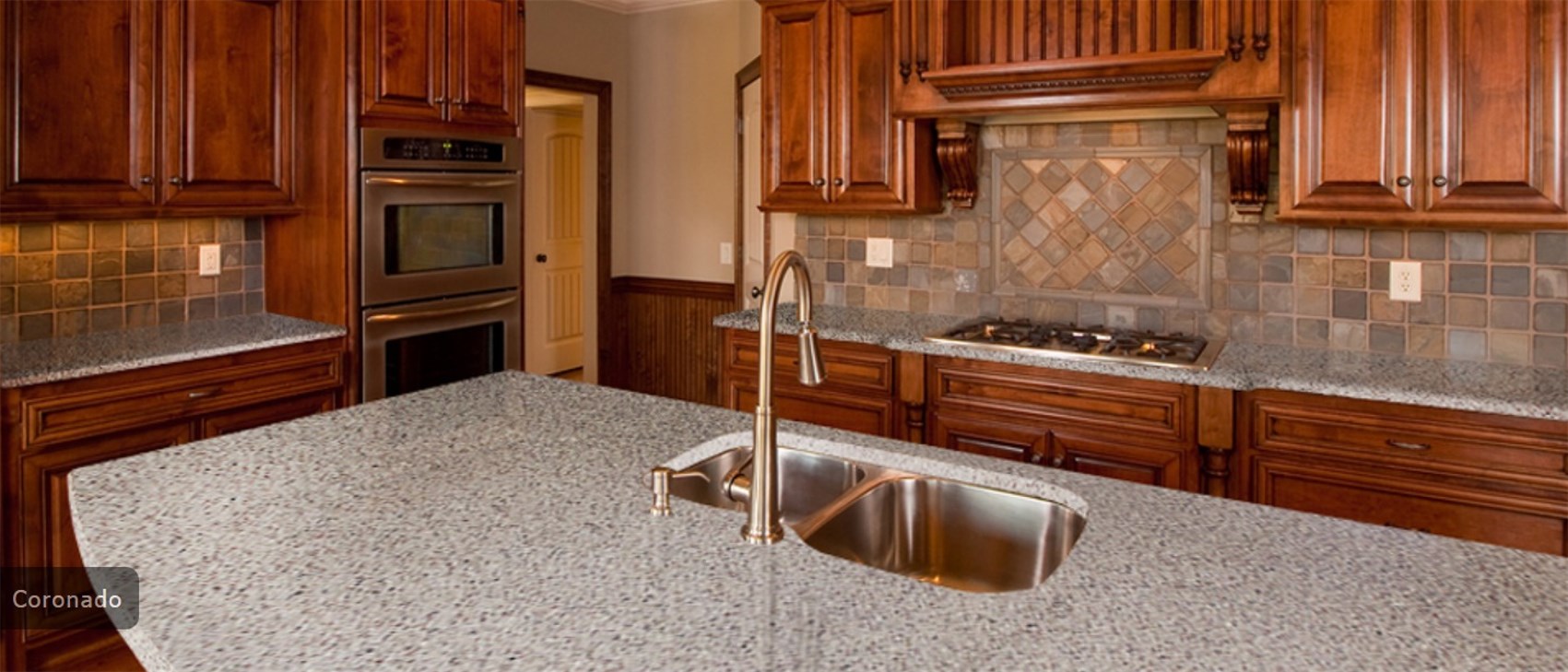The History Of Quartz Countertops
October 28, 2013Quartz is the most abundant mineral on Earth and one of the hardest, so it is "hardly" surprising that manufacturers saw its great potential for a surface material more than 50 years ago. Since that time, quartz countertops have grown in popularity as homeowners discovered what the earliest quartz pioneers knew - when the natural mineral quartz is improved upon by man's ingenuity, quartz countertops can compete with other natural stone countertops in every way.

The process to engineer quartz countertops by pressing polymer resins into natural, raw quartz crystals was developed by the Italian company, Breton S.p.A, in the early 1960s. Today, Breton continues to be a leading supplier of engineered stone-making equipment. "Breton was first established in 1963 by Marcello Toncelli, who perceived the enormous potential in developing a market which was absolutely innovative and at the time practically unexplored: developing new technologies and manufacturing industrial plants for producing compound stone."
Breton's innovative process meant that a mineral, essentially unviable as a countertop material on its own, could now be reinforced to make a solid surface that was hard, durable, and very low in porosity. Additionally, manufacturing could be controlled to produce a variety of products, from fine to course grained, with varying color depending upon the pigments added during the process and varying sparkle, depending upon materials like glass that may be added as well.
Quartz countertops quickly became popular in Italy, and have been featured in European kitchens for decades to follow. It took longer for the trend to catch on in the United States - this may be explained in various ways: trends and fashions that originate abroad often take time to trickle to the U.S., or, more likely, American homeowners were satisfied with our current options at the time (laminate was the predominant surface in the 60s and 70s) and were not inclined to embrace a material that looked so similar to widely available natural stone options like granite, marble and limestone. (Quartz countertops can be manufactured to look strikingly like all three of these natural stones.)
Whatever the explanation, when the significant benefits of quartz countertops became clear to American consumers in the 90s, their popularity grew swiftly. By 2004, HGTV was reporting U.S. sales had increased by 60 percent over the previous year. The quartz boom had begun - and continues to this day.

The benefits of quartz countertops have certainly won us over:
- Consistent, uniform appearance.
- Heavy, solid slabs make for great, long-lasting surfaces that can typically be installed in one piece.
- Wide variety of colors - and unrivaled availability.
- Exceptionally hard and durable.
- Highly resistant to chips, dents, stains and other surface damage.
- Very low porosity which limits bacterial growth.
- Heat resistant.
- No need for re-sealing.
- Low maintenance.
As a manmade material, not only is quartz widely available, it can be easily manufactured for unique sizing and unique shapes, including circles and curves.
The history of any building material is always fascinating, particularly when you are considering all your options for your next project. Consider quartz - it's not the new kid on the block anymore. It's a proven material full of exceptional benefits, with a half century of experience as an innovative and exciting countertop option!
Q Premium Natural Quartz are the latest in elegant and durable natural quartz countertops from MS International. MSI's strategy is to enhance the homes and projects of consumers in North America by providing a wide selection of products that are innovative, affordable, and accessible from a single supplier.
Read More About Quartz History and How Quartz Countertops are Made:
Crystals To Countertops How Quartz Countertops Are Made
What Is Bretonstone Technology?
What Is Quartz and How Is It Made?
Where Do Quartz Countertops Come from?

